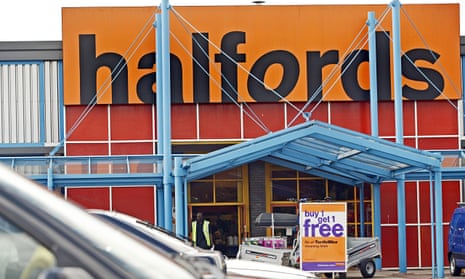Halfords is to revive its Cycle Republic chain next month, five years after the wheels came off the specialist bike shops.
Matt Davies, chief executive of the retailer, said he could envisage as many as 100 cycle stores across the country within a few years, as Halfords tried to benefit from the UK’s cycling boom.
The first store will open in London’s Euston Tower on 12 December and Davies said about a quarter of the chain was likely to be in the capital.
“We believe there is a lot of opportunity in major towns and cities across the UK and believe this will be a key driver of how we continue to generate growth for Halfords over the longer term,” he said.
Halfords closed its eight Bikehut and Cycle Republic stores in 2009 at a cost of £1.2m as it said they did not deliver sufficient returns on their investment.
Davies, who joined the group just over two years ago, said the new Cycle Republic would give Halfords a way to operate in central London and other big cities where it wasn’t economic to operate its main stores. He also hopes the smaller stores will draw in cycle enthusiasts who didn’t think the range or expertise on offer in its main stores was good enough.
Davies revealed the plans as the company reported an 11.2% rise in pre-tax profits and 6.8% rise in sales for the six months to the end of September. Sales at Halfords stores open more than a year rose 6.8%, largely thanks to a 16% lift in sales of cycling gear.
Despite the strong performance, which met City expectations, shares in the company slid 4%, partly on concerns about rising costs and slowing pace of growth in the last three months of the half year in cycling, car maintenance goods and travel items such as tents. Sales of bikes and cycling gear, which are now the biggest contributors to Halfords sales, rose 5.7% in the second quarter compared to 7.9% in the first quarter, despite the Indian summer.
Davies insisted that the warm weather was of little help to Halfords, as adults wanted to buy bikes when they had the whole summer ahead of them and the weather meant car drivers were less likely to replace windscreen wipers, de-icer or headlight bulbs. He said the cycling market was growing by about 5% a year and government support continued to give it momentum that would last beyond this summer’s great weather and the hype surrounding the Tour de France’s visit to Yorkshire.
“We believe it’s here to stay,” Davies said. “There is real recognition of the health benefits and the pleasure generated by cycling.”
The company said retail operating costs would rise by between 5% and 6%, about 1% ahead of its earlier prediction, as it spent more on stock, distribution centres and staff training to ensure it could serve customers better. Davies said he wanted to move Halfords’ store staff off the national minimum wage as they gained qualifications. Currently the vast majority are paid the most basic legal rate but Davies said half of the company’s employees would earn 8% more than the minimum by next spring and 80% would by 2016. However only two people in every store, about 8% of the total, would be earning the living wage laid down by workers rights groups, by 2016.
Davies said he would like to see more staff sharing in Halfords’ improving profits by earning the living wage and was “not proud” of the current situation on pay. “I would love to wave a magic wand and put everyone on the living wage but the reality is we cannot do everything at once,” he said.

Comments (…)
Sign in or create your Guardian account to join the discussion